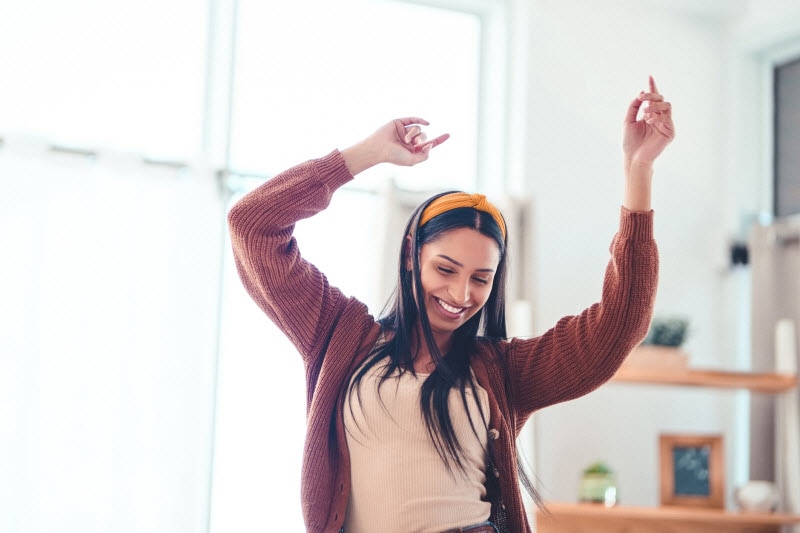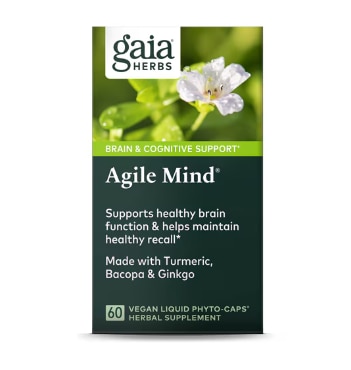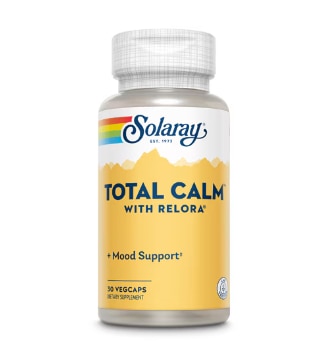Even before we can walk, we can dance. It’s a primal, intrinsic human behavior that emerges as early as infancy. Ever watched a baby sway to the music? Babies move in sync with musical rhythms. From a young age, humans are hardwired for the synchronicity between the movement and sound to generate an experience of pleasure.
Although we know intuitively that dance feels good, and is good for us, scientists didn’t start paying attention to the neurological effects of dance in the last couple of decades. Researchers were intrigued by the complex mental coordination dance entails. Because dance synchronizes music and movement, it creates a “pleasure twofer”: Music stimulates the brain’s reward centers, while dance activates its sensory and motor circuits.
The mental health benefits of dance are doubly impactful, with dance found to help alleviate headaches, build strong spatial cognition, improve mood and memory, and release feel-good chemicals like serotonin, dopamine and oxytocin.
Thanks to vastly improved technology, the young field of dance neuroscience, which explores dance’s unique brain-body connection, is rapidly emerging. Sophisticated imaging has helped show how dance’s multifaceted demands engages both mind and body.
In addition to being an inherently joyous activity, as a general rule, dance enhances the flow of neural communication. The motor cortex, basal ganglia and cerebellum are all involved in coordinating motor activity. Dance also activates the limbic system, one of the oldest structures in the brain, which is involved in emotion and memory.
Cognitive & Mental Health Benefits of Dance
Here are a few of the ways your brain responds to dancing.
Dance creates new neural pathways
Dance, by reinforcing the brain’s internal networks, amplifies the cognitive capacity to problem solve. Neurological disorders like Parkinson’s and Alzheimer’s, for example, break down existing neural pathways. Dance helps the brain adapt and find better solutions, by creating new pathways and neurons.
Dance invites alternate resources to come online and give the brain more options. Studies of the popular Dance for PD program, which offers dance classes for people with Parkinson’s disease, have found that dance can improve motor control and balance while reducing tremors and rigidity. Research has also shown benefits for those with brain injuries, cognitive impairment, cerebral palsy and dementia.
In a study by researchers at the Albert Einstein College of Medicine, they found that dancing is associated with 76 percent reduced risk of dementia among the participants.
Dance boosts memory
Dancing improves brain function and boosts memory. A 2016 study published in the Frontiers in Aging Neuroscience shows that dancing improves cerebral health. Dancing improves one of the cognitive domains, which is spatial memory. The study also suggests that maintaining an active lifestyle into old age can preserve motor, cognitive and perceptual abilities.
Dance away the blues
A new study indicates that dancing may be one of the best effective forms of treatment for depression. In February of 2024, Australian researchers published a study suggesting that dance ranked higher for mood relief than several other exercises, including walking or jogging, yoga, tai chi and strength training. The study aimed to identify which kind of exercise would have the biggest impact for treating major depressive disorder, either in conjunction with or compared to psychotherapy and antidepressants. Dancing beat every other treatment for depression, including SSRIs and was at the top of the charts in terms of the largest reductions in depression symptoms, while exercises like walking or jogging, yoga and aerobic exercise with therapy were close behind.
How does it work? Dancing can help with symptoms of depression and anxiety by increasing neurotransmitter activity in your brain that releases certain feel-good chemicals. Dance also improves self-esteem and enhanced mindfulness. Other studies have found that dance provides a way to get out of your head and escape rumination— the cyclical thoughts that focus on repetitive negative thoughts and worries.
Dance helps create a sense of connection
This synchronicity of movement to music can also be seen on any dance floor. When humans hear music, they are driven to move in tune or entrain to the beat, with this rhythmic entrainment leading to a palpable sense of wellbeing.
Dancing with others can multiply its positive effects by helping to build stronger social ties and create a sense of belonging and trust. When you dance with others, the mirror neurons in your brain helps you get in sync with them. When you enter a room where bodies are moving in a joyful way, it’s very likely that you will experience that as well. Research suggests that doing things synchronously with others such as line dancing can build feelings of empathy.
Getting the (dance) party started
So you want to dance? Here’s how to take your first steps.
Dancing with yourself
Go low stakes at first. A great place to get your groove back is to dance alone at home. Turn up some of your favorite upbeat songs and start moving. You might even try incorporating some dance moves into your housework routines.
Dare a dance class
Consider signing up for a dance class, whether online or in person. Zumba, Nia, or other dance-based workout routines. You can look for dance classes in a variety of places, including:
Local dance studios
Community centers
Gyms and fitness centers
Local colleges and universities
Live music + people = dancing
An evening out with friends at a local dance or music venue can also be a fun way to show off your moves. It also has the social benefits of spending time with friends, so you are doing two things at once: Making meaningful connections and enjoying the benefits of somatic movement.




